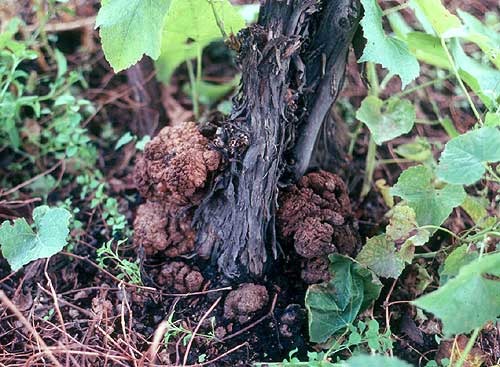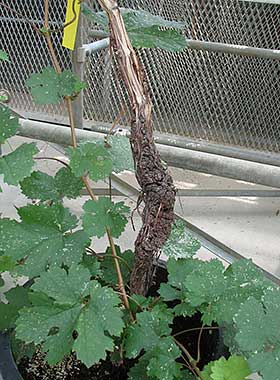Crown Gall of Grape
Causal Agent
Agrobacterium vitis and A. tumefaciens
 Hosts
Hosts
Agrobacterium vitis has a host range limited to grape (Vitis species) whereas A. tumefaciens has a wide host range. More than 600 plant species in over 90 families are susceptible to A. tumefaciens, although not all species sustain significant damage. Common hosts include apple, blackberry, cherry, euonymus, forsythia, grape, peach, pear, plum, poplar, raspberry, rhododendron, rose and willow. In Oklahoma, crown gall of grape is usually caused by A. vitis.
Symptoms

The disease causes reduced vigor and yield loss. Sometimes plants harbor the bacterium, but do not express visible symptoms. A. tumefaciens can survive in soils and vine debris while A. vitis does not survive well in soil, but can be harbored in root debris. Most infections are due to planting infected plants or cuttings.
Control
Plant grapevines that have been certified to be free of crown gall. Infected plants should be removed and destroyed. Depending on the species, it may be necessary to leave the ground fallow for several years before replanting. Laboratory tests are available to determine which species of Agrobacterium is present.

